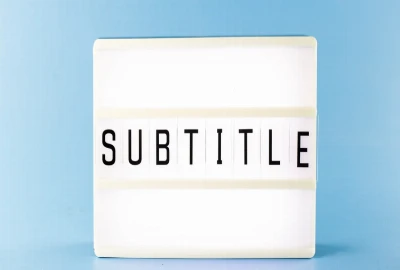Ghosts in the Machine: Hauntology and Digital Afterlives in Storytelling

Defining Hauntology in a Digital Context
The term hauntology, first coined by philosopher Jacques Derrida, refers to the persistence of elements from the past that refuse to stay buried. In storytelling, hauntology manifests through narratives that evoke nostalgia, lost futures, or technological ghosts—stories haunted by what could have been. Today, digital media amplify this phenomenon. Every deleted tweet, archived forum post, and forgotten website becomes a spectral trace, a ghost in the machine. The digital realm doesn’t let anything die; it preserves and reanimates fragments of the past.
Nostalgia as Narrative Atmosphere
Hauntological storytelling often relies on a nostalgic mood—an emotional resonance that suggests absence as much as presence. Think of shows like Black Mirror or Twin Peaks: The Return, where technology becomes a conduit for memory, regret, and unresolved history. These works don’t just reference the past—they resurrect it, creating worlds that feel both familiar and uncanny. Nostalgia becomes a haunting, not a comfort.
Cultural Relevance in the Post-Digital Era
In a world where media cycles are instantaneous and archives infinite, storytellers are turning to hauntology to process digital overload. The result is a growing fascination with temporal dislocation: stories that exist between eras, timelines, or realities. The past’s echoes shape every narrative choice, reminding us that even our technologies are haunted by the memories they carry.
Digital Ghosts: When Data Becomes the Afterlife

The Persistence of Online Identity
In the age of social media, death no longer means disappearance. Online profiles, text messages, and voice recordings continue to circulate long after their creators are gone. This persistence creates digital afterlives—spaces where memory becomes interactive and the dead remain “present.” Storytelling has begun to reflect this condition, exploring how data itself can become a form of haunting. Films like Her and Archive illustrate this beautifully, depicting relationships between the living and digital ghosts coded in memory.
AI, Simulation, and Resurrection Narratives
As AI technology advances, the line between mourning and simulation blurs. Machine learning systems that replicate speech or writing styles offer new forms of digital resurrection. In narrative design, these technologies become metaphors for grief, loss, and the impossibility of closure. Characters interact with algorithmic echoes of loved ones, raising ethical and emotional questions: If an AI can mimic memory, is it a ghost—or merely a mirror?
The Ethics of Digital Immortality
Hauntological storytelling also interrogates the morality of preserving consciousness in data. When technology becomes a vessel for remembrance, who controls the narrative of the dead? From digital memorials to posthumous holograms, storytellers use hauntology to explore the human cost of digital eternity. These tales remind us that in trying to immortalize memory, we may trap it instead—turning remembrance into haunting.
The Aesthetics of the Uncanny: How Technology Feels Haunted

The Sound of Static and the Look of Decay
A central feature of hauntological aesthetics is its texture—its ability to make technology feel ghostly. Analog static, VHS distortion, lo-fi filters, and flickering screens all evoke the sense of something lost yet lingering. In storytelling, these sensory details serve as portals to other timelines. They remind us that every medium, from vinyl to video, carries the residue of the past.
Retro-Futurism and the Ghost of Lost Futures
Hauntology is deeply connected to retro-futurism—the feeling of being haunted by futures that never came true. In series like Severance or Maniac, design and sound reference outdated visions of tomorrow: beige computers, analog interfaces, outdated corporate spaces. These aesthetics create temporal confusion, suggesting that even the future can decay. The world of the story becomes a haunted archive, where technology itself mourns what it once promised.
Digital Decay as Emotional Language
In hauntological storytelling, glitch and error are not flaws but emotional cues. They signal rupture, loss, or the intrusion of memory. When a video feed lags or a hologram flickers, it evokes the fragility of digital existence. Creators use these moments to express absence through presence—to make the invisible weight of the past felt in the digital now.
Narrative Time Loops: Memory, Repetition, and the Ghostly Archive

Stories that Refuse to End
Hauntological narratives often reject closure. They loop, repeat, and fragment—mirroring the way digital media replays content endlessly. Think of Dark, Donnie Darko, or Twelve Monkeys: stories where timelines fold in on themselves, and characters are trapped in cycles of recurrence. These loops are more than structural choices; they represent the haunting nature of memory and digital preservation.
The Archive as a Living Entity
Every digital archive is haunted. The internet stores everything, yet its permanence feels fragile—links rot, platforms die, and formats become obsolete. Storytellers use this instability to create tension between remembering and forgetting. In narrative worlds, archives can become sentient, as in Paprika or Archive 81, where stored memories begin to rewrite reality itself. The archive becomes both memory and ghost.
Temporal Blurring and the Spectral Present
Digital storytelling increasingly collapses temporal boundaries. Past posts, present actions, and future predictions coexist in one interface. Hauntology thrives in this condition of temporal blur. When time itself becomes non-linear, stories no longer move forward—they shimmer, repeat, and echo. The result is a new kind of narrative time: the spectral present, where everything happens at once and nothing ever ends.
Hauntology in Interactive and Transmedia Storytelling

Video Games as Haunted Spaces
Video games offer fertile ground for hauntological storytelling. Games like Silent Hill 2, Control, and What Remains of Edith Finch use spatial exploration to evoke memory and trauma. Abandoned corridors, looping levels, and glitching realities mimic the disorientation of grief. Here, players don’t just witness haunting—they inhabit it, walking through architectures of memory where every object feels alive with absence.
Digital Storyworlds That Remember You
In transmedia projects and interactive fiction, hauntology emerges through personalization. Games and AI-driven narratives that remember user choices—like The Stanley Parable or Detroit: Become Human—create the illusion of memory within machines. These systems haunt players with their own past actions, turning interactivity into introspection. The story remembers, and in that remembering, the player becomes both ghost and creator.
The Algorithm as Narrative Apparition
Even social media algorithms have become part of hauntological storytelling. When an old photo resurfaces in a “memory” post or a playlist auto-generates songs from a decade ago, technology becomes an unwitting storyteller. In film and literature, creators now use these algorithmic hauntings to explore how digital systems reanimate the past—without understanding it. The algorithm becomes a ghostwriter of human nostalgia.
Future Hauntings: Designing Storyworlds of Digital Memory

Speculative Storytelling and Post-Human Consciousness
As technology moves toward neural interfaces and digital twins, speculative storytelling asks what happens when consciousness itself becomes data. Future narratives will likely explore hauntology not as metaphor but as lived experience—stories where human and machine memory fuse. The ghost in the machine becomes us, echoing through code, simulation, and archived thought.
Designing for Digital Eternity
Creators today must grapple with the longevity of digital artifacts. Every online narrative—whether a film, a game, or a web series—exists in an evolving archive. Storytellers who embrace hauntology design with impermanence in mind: embracing glitches, allowing endings to loop, or building interactivity that decays over time. These design choices make digital storytelling feel alive, yet always on the verge of disappearance.
Ethical Futures of Memory and Story
The future of hauntological storytelling will depend on how we handle digital mortality. As AI resurrects voices and algorithms curate our legacies, the line between remembrance and exploitation will blur. Creators must consider who gets to control their ghosts—and how storytelling can honor rather than consume the dead. The digital afterlife is not just a theme but an ethical frontier.




